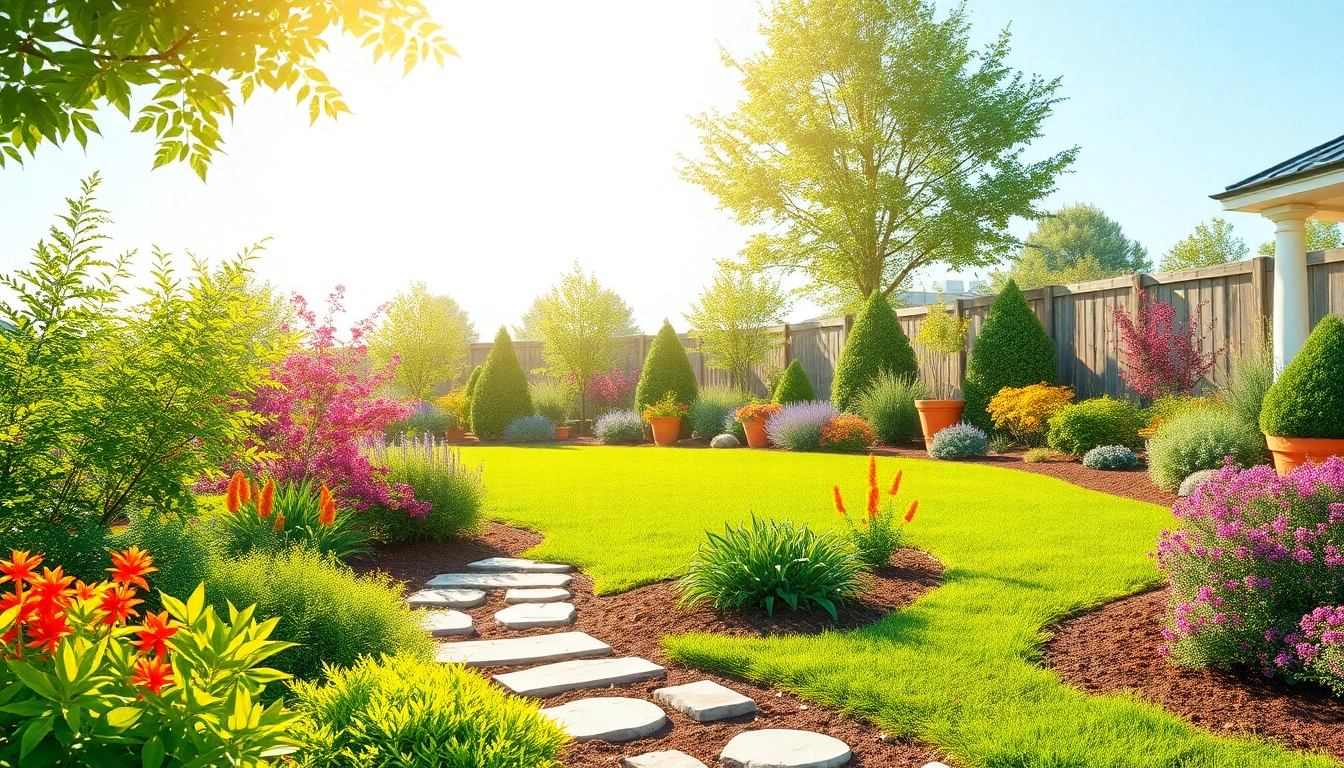Understanding Landscaping Company Pricing
Landscaping is an essential aspect of maintaining a home’s exterior, yet the cost of these services can vary significantly. Understanding landscaping company pricing is pivotal for homeowners seeking to enhance their outdoor spaces economically and effectively. This guide will delve into multiple aspects of pricing, enabling you to make informed decisions regarding landscaping services.
Factors Influencing Costs
Several elements impact the final pricing of landscaping services, including:
- Project Scope: The size of the area requiring service significantly affects costs. Larger lawns or extensive gardens naturally require more time and materials.
- Labor Costs: Labor rates can vary by region, as landscaping services tend to charge based on local wage standards. Companies with specialized skills may command higher rates.
- Materials: The quality and type of plants, soil, mulch, and hardscaping materials (like concrete or pavers) can drive up costs. High-end materials provide better longevity and aesthetics.
- Service Type: Different services come with varied pricing structures. Basic lawn maintenance tends to cost less compared to complex installations like water features or retaining walls.
- Seasonal Demand: Landscaping prices can fluctuate with seasons. Commonly, spring and early summer have the highest demand and rates, while late fall and winter often see reductions.
Typical Pricing Models
Landscaping companies might adopt various pricing strategies, which can include:
- Hourly Rate: This model is common for smaller tasks such as lawn mowing or basic gardening. Rates can range from $25 to $75 per hour depending on expertise and geographical location.
- Flat Rate: For specific projects like laying sod or planting trees, landscaping firms may provide a flat fee. Prices will often be influenced by the scope of the work and materials used.
- Per Square Foot: This pricing model applies when projects involve installation over larger areas, often broken down to a cost per square foot, which can be between $4 and $12 on average.
How to Compare Estimates
When gathering quotes from different landscaping companies, it is essential to maintain a consistent approach to ensure fair comparisons:
- Request Itemized Quotes: Ask each company for a detailed breakdown of costs, so you can see what you are being charged for each aspect of the service.
- Check References: Always request references or look for online reviews to gauge previous clients’ satisfaction with the company’s pricing and quality of work.
- Assess Qualifications: Verify any licenses and insurance the landscaping company holds. Ensuring they meet industry standards can affect pricing and quality.
Breaking Down Landscaping Costs per Square Foot
Average Costs in 2025
As of 2025, the average cost for landscaping services can vary significantly based on the type of work undertaken:
- Basic lawn maintenance: Approximately $4 to $12 per square foot.
- Landscape design installation averages around $15 to $40 per square foot, depending on complexity.
- Hardscaping (patios, walkways) can range from $10 to $25 per square foot.
Cost Variations Based on Services
Different landscaping services exhibit varying costs:
- Lawn Installation: Professional sod installation typically ranges from $1,500 to $2,500 for a quarter acre, influenced by the type of grass.
- Garden Creation: Planting new flower beds can cost between $2,000 and $5,000, depending on plant types and design complexity.
- Water Features: Installing a small pond or fountain can add $500 to $5,000 to your project cost based on materials and electrical needs.
Examples of Square Foot Pricing
Understanding the average costs based on square footage can make budgeting easier:
For example, a typical landscaping job including grass, plants, and minor hardscaping might be estimated like this:
- For a 1,000-square-foot lawn: Cost around $4,000 to $12,000.
- A patio installation of the same size, averaging about $15,000 to $25,000.
Common Landscaping Services and Their Pricing
Lawn Care Services
Lawn care encompasses a variety of services, each carrying a specific pricing structure:
- Mowing: Prices typically range from $30 to $80 per visit, based on area size.
- Fertilization: On average, fertilization services can cost between $50 and $150 per application, depending on the product used.
- Weeding and Pest Control: Regular weeding services may incur charges around $50 to $100 per hour, while pest control methods can cost upwards of $200.
Hardscaping vs. Softscaping
The distinction between hardscaping and softscaping impacts pricing significantly:
- Hardscaping: Involves non-plant elements such as patios, walkways, and walls, and usually requires significant labor and material, costing more than softscaping.
- Softscaping: Relates to planting and growing elements. Typically costs less than hardscaping, largely depending on the types and quantities of flowers or shrubs used.
Seasonal Maintenance Costs
Maintaining a landscape throughout the seasons leads to an ongoing cost. Seasonal averages include:
- Spring: Preparation services like cleaning and planting may cost from $100 to $400.
- Summer: Regular maintenance could amount to $400 to $1,200.
- Fall: Cleanup and preparation for winter typically costs around $200 to $600.
- Winter: Snow removal services can range from $50 to $200 per occurrence, depending on snowfall and service frequency.
How to Get Honest Quotes from Landscaping Companies
Essential Questions to Ask
It is critical to be informed before choosing a landscaping company. Here are some essential questions to guide your inquiries:
- What is included in the estimate?
- Can you provide an itemized breakdown of materials and labor?
- What is your estimated timeline for completion?
- What warranties or guarantees do you provide?
Identifying Red Flags in Pricing
Be vigilant for warning signs that could indicate a company may not be trustworthy:
- Massively Low Quotes: If it appears too good to be true, it likely is. Compare quotes to see if something is significantly lower.
- High-Pressure Sales Tactics: Be wary of companies urging you to make immediate decisions without allowing for comparison.
- Lack of Insurance or Certifications: A legitimate company should have proper insurance and licenses, which protect both you and them.
Negotiating for Better Rates
Negotiation is often part of the landscaping process. Here are tips to help you achieve better deals:
- Bundle Services: If you need multiple services, ask for a bundled rate. This can lower the overall cost.
- Flexible Scheduling: Consider letting the company choose dates when their workload is lighter for potential discounts.
- Offer Referrals: If you can bring in additional clients, negotiate a lower rate or a percentage off.
Maximizing Value for Your Landscaping Investment
Understanding Return on Investment
Investing in landscaping not only beautifies your home but can also enhance property value. Studies suggest that well-maintained landscapes can yield a return on investment of up to 150% at resale.
When to DIY vs. Hire Professionals
Deciding between DIY landscaping and hiring professionals is key:
- DIY: Ideal for small projects, cost-saving can be achieved if you possess the necessary skills and tools.
- Hiring Professionals: Recommended for complex tasks involving design ethics or advanced installations, ensuring quality work and minimizing costly future corrections.
Budgeting for Future Landscaping Projects
Planning ahead for future landscaping costs can save you from surprise expenditures:
- Allocate Funds: Set a budget that accommodates routine maintenance, unexpected repairs, and enhancement projects.
- Research Costs: Stay informed on service prices in your area to ensure your budget is realistic.
- Track Expenditures: Keep records of past landscaping expenses to refine future budgeting efforts.








